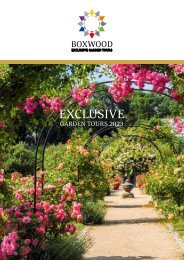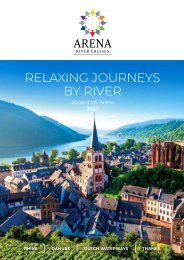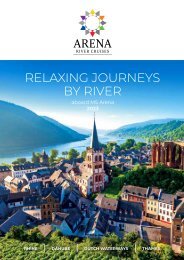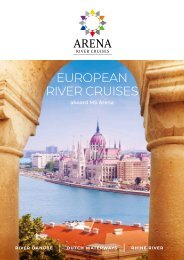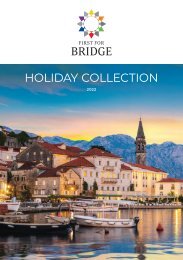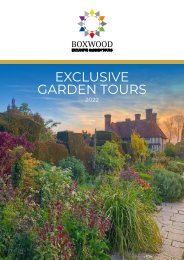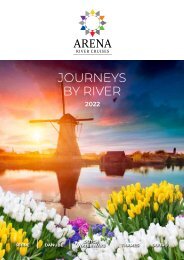Art Pursuits 2022 brochure
Journeys of Discover with Art Pursuits
Journeys of Discover with Art Pursuits
- No tags were found...
Create successful ePaper yourself
Turn your PDF publications into a flip-book with our unique Google optimized e-Paper software.
ITALY<br />
PARMA & PIACENZA<br />
<strong>Art</strong>, Architecture & Gastronomy in the Duchy of the Farnese Family<br />
Camera della Badessa<br />
From the Romans to the Romantics, the city of Parma has a rich cultural history. It is the setting for Stendhal’s novel The<br />
Charterhouse of Parma and the birthplace of Verdi and Toscanini. It is renowned for its gastronomy and for its violets,<br />
introduced by Duchess Maria Luigia of Austria, Napoleon’s second wife, for whom Parma Violet perfume was created. Parma<br />
is no less rich in artistic treasures. It boasts a magnificent Romanesque cathedral and Baptistery, decorated by the great early<br />
mediaeval sculptor Benedetto Antelami. In the early 16th-Century, Parma was home to Correggio and Parmigianino, two of<br />
the most original painters of the Renaissance. Until the 20th-Century Correggio was arguably more famous than Leonardo da<br />
Vinci; a visit to Parma helps to explain why, affording a unique opportunity to experience at first hand his ground breaking<br />
ceiling paintings in the city’s convents and churches. From 1545-1731 Parma was ruled by the Farnese, the descendants of<br />
Pope Paul III, who created the Duchy of Parma for his illegitimate son. The vast Farnese palace, the Pilotta, now home to the<br />
city’s art collection, boasts an impressive late Renaissance theatre, the Teatro Farnese. The surrounding countryside offers<br />
further delights. Among these is the 15th-Century castle of Torrechiara, nestling among pretty vineyards, with its dazzling<br />
Camera d’Oro, a rare survival of Early Renaissance secular decoration, glorifying the owner’s love for his mistress; the castle of<br />
Fontanellato, wittily frescoed in mannerist style by the young Parmigianino, and the 18th-Century villa of Colorno, known as<br />
the Versailles of Parma, where Duchess Maria Luigia cultivated her violets. And no visit to Parma would be complete without<br />
tasting some of the region’s gastronomic delights. On our last day will visit Piacenza, the former capital of the Farnese duchy<br />
where bronze statues of Alessandro and Ranuccio Farnese stand outside the beautiful late-Gothic town hall.<br />
24<br />
To book call 01280 736 115 or visit artpursuits.com





